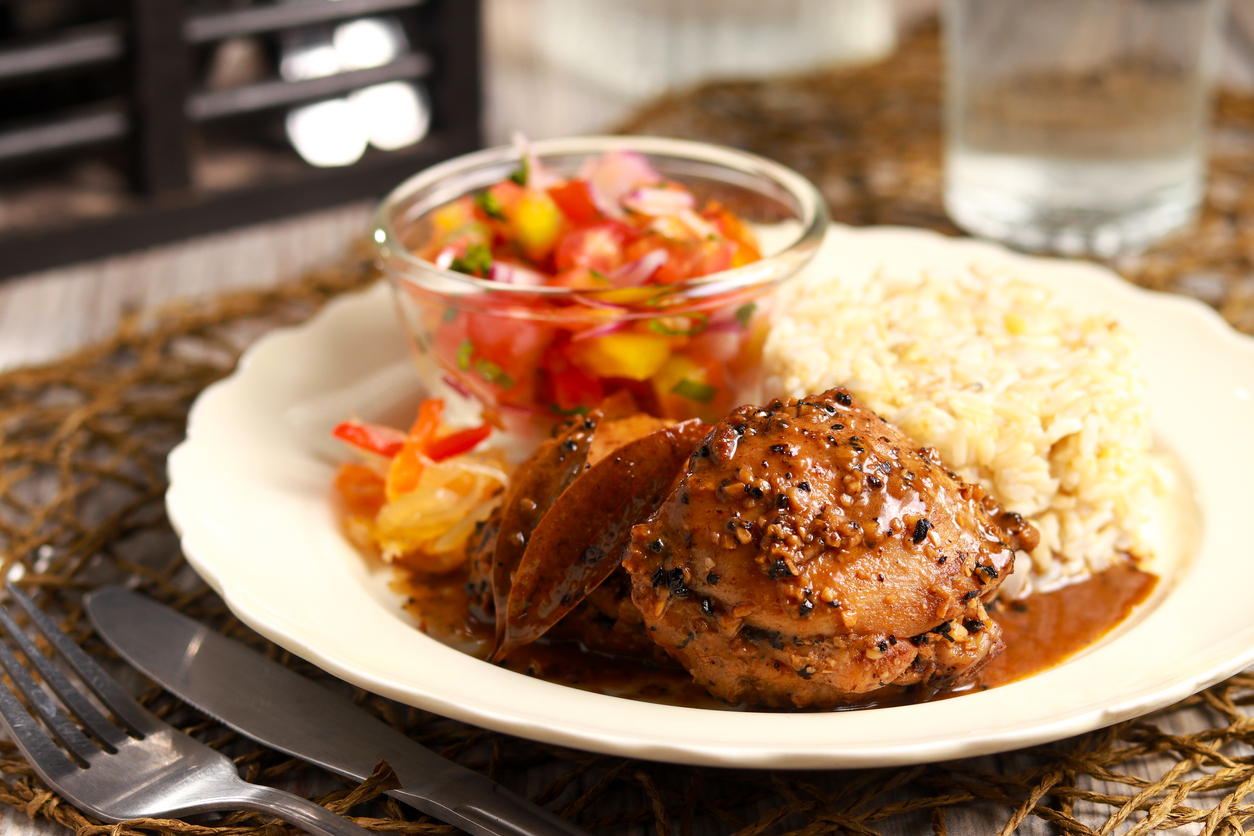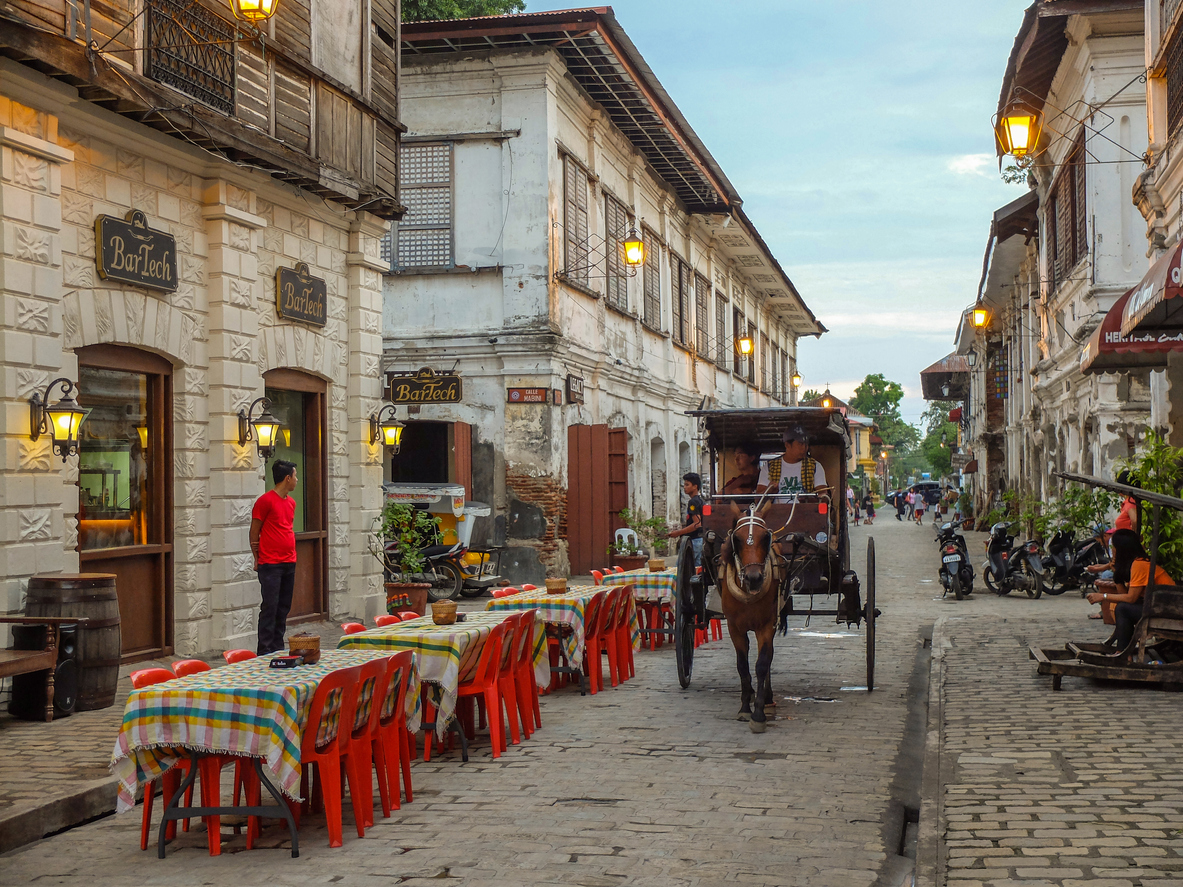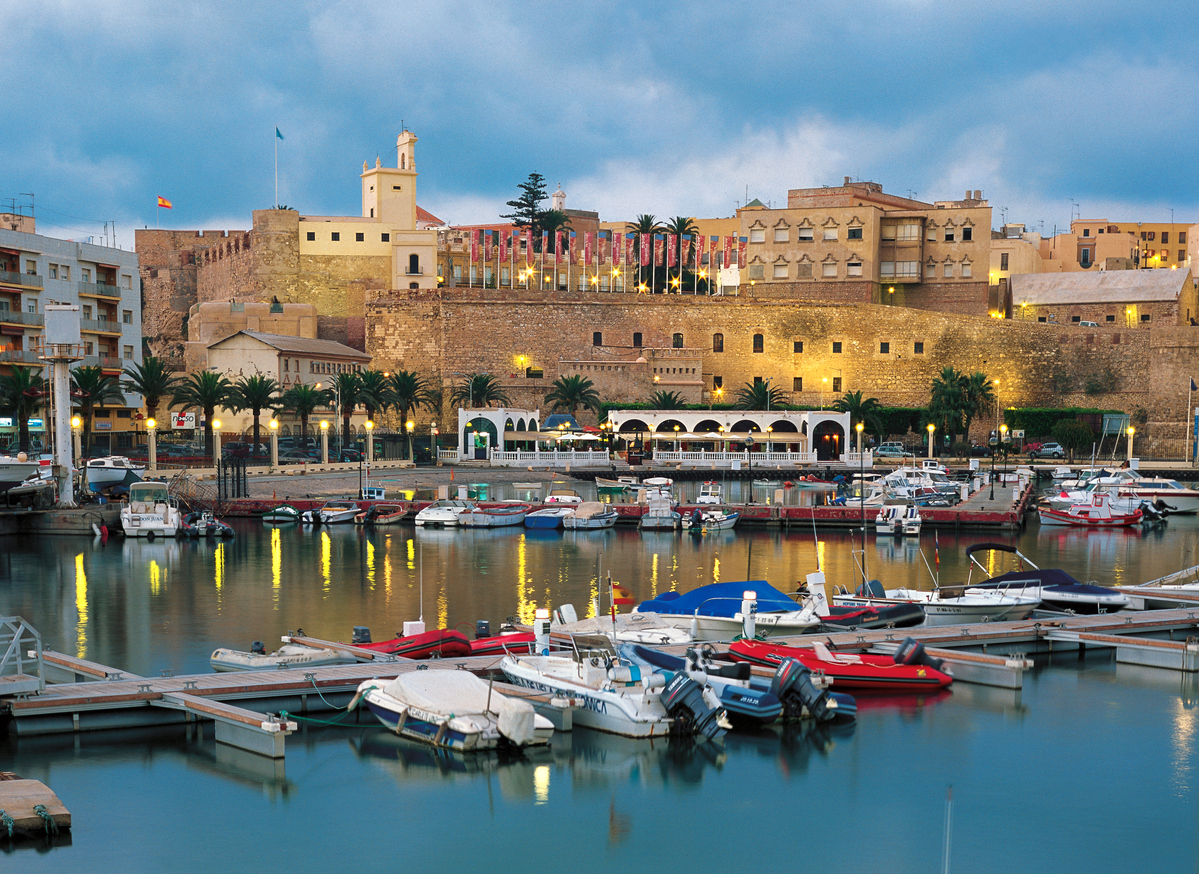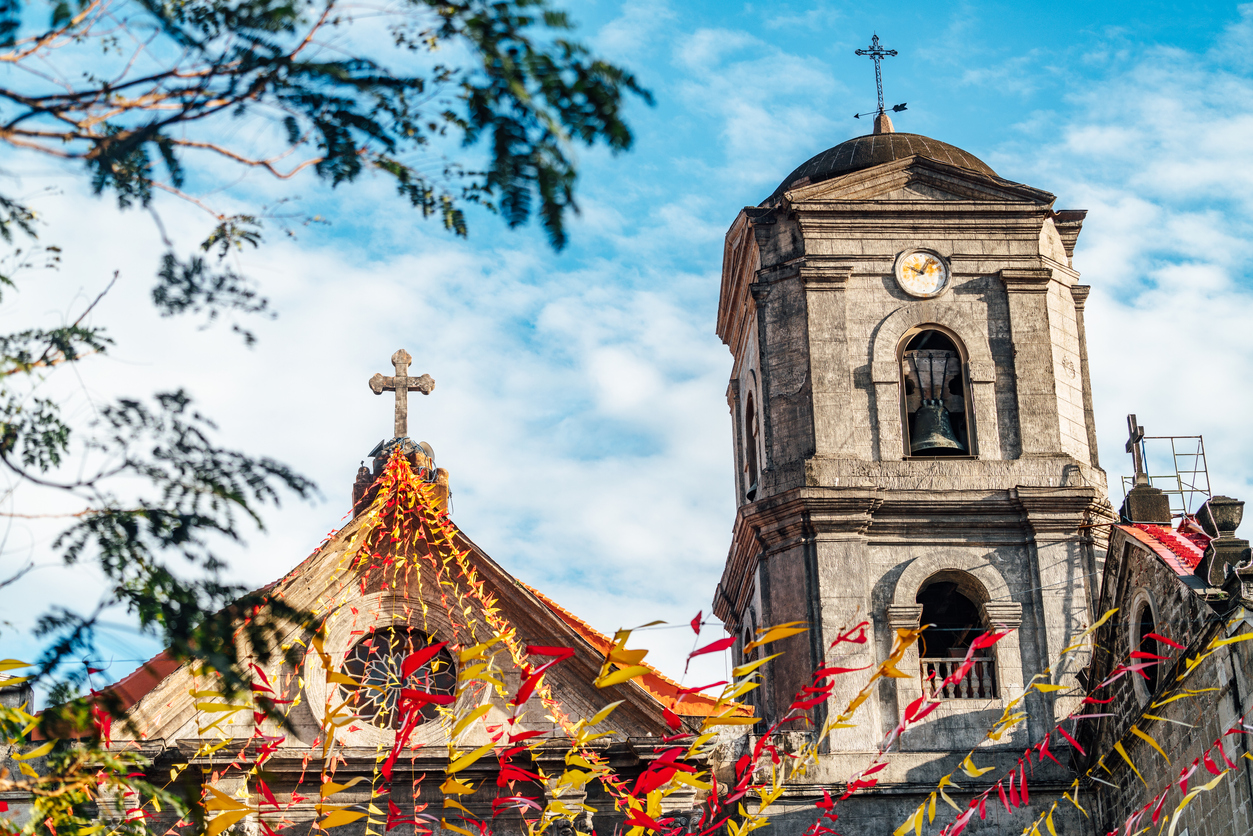It’s well known, of course, that Spain once ruled much of the Americas beginning at the end of the 15th century, from California down to Tierra del Fuego, in the process making Spanish the world’s second most spoken language. Some history buffs even realise that even on the European continent, Spain left its own legacy in countries from Italy to the Netherlands. But perhaps fewer these days remember that its reach also extended elsewhere, as well – both to next-door Africa and farthest flung of all, East Asia. Here’s just a (highly abridged) taste of that story.
Asia
The far-flung, 7,641-island archipelago of the Philippines was first encountered by explorer Ferdinand Magellan in 1521, and the first Spanish settlement (and first capital) was established at Cebu in 1565, with current capital Manila founded in 1571 by Miguel López de Legazpi, a Basque who was once the civil governor of Mexico City and was commissioned by New Spain’s viceroy to mount an expedition to find the Spice Islands in the Pacific Ocean. Named Filipinas for Spain’s then ruler Phillip (Felipe) II at the time, these islands were ruled by various sultanates and other entities – sometimes colonies of, or paying tribute to, other Asian powers based in regions of present-day Indonesia, Malaysia, and Japan. Its largely Malay population practised a variety of religions, depending on the region, including Islam, Hinduism, Buddhism and animism.
The colony was administered from New Spain until Mexico gained its independence in 1821, then passed directly to control from Madrid. Much of its economy depended on the so-called galleon trade between Manila and Mexico (and thence onward to the Spanish port of Cádiz), which became one of the main routes for goods such as spices, silk and other textiles, porcelain, and lacquerware from China, Japan, and elsewhere in Asia to reach Europe.
 Piotr Chalimoniuk
Piotr Chalimoniuk
The Spanish initially set up an encomienda system similar to that of feudal Europe, though by the 18th century this became largely replaced by administrative provinces. Spanish-style towns were established, built around central plazas with existing populations relocated around them, and mass conversion over the centuries left Roman Catholicism by far the majority religion (to this day, followed by some 83 percent of the population).
During the 19th century, demand for consumer goods and raw materials from an industrialising Europe led to a boom in trade, and the transformation of Manila into the “Paris of Asia”. As the century wore on, Filipino nationalism also grew in strength, finally culminating in armed revolt in 1896, but the conflict eventually reached a stalemate – until the breakout of the Spanish-American War in 1898, which broke out over Cuba but affected this other remaining Spanish colony on the other side of the world by sinking the Spanish fleet in Manila Bay. What ensued was decades of U.S. occupation, but more to the point, the end of 333 years of Spanish rule over the Philippines.
U.S. rule and the influence of English may have largely erased that of Spanish in the Philippines (though thousands of Spanish-derived words and expressions remain in Tagalog, Cebuano, and other local languages, as well as family names), but this country’s legacy from Spain/Mexico besides Catholicism runs throughout the culture. That especially includes food (such as flan, lechón roast pork, and adobo vinegar-marinated meat or seafood) and music/dance (like rondalla and harana music, along with the national dance, the Cariñosa).
 AkaratPhasura
AkaratPhasura
In addition, visitors can also see colonial sites in several parts of the country, most notably Manila’s Intramuros, the original 67-hectare (165-acre) colonial old town, including Fort Santiago, Manila Cathedral, the old city hall, and San Agustín Church (top), at 412 years the country’s oldest. A few hours north of Manila on the same island of Luzon, the city of Vigan was the archipelago’s third Spanish settlement, and conserves several remnants of that era, including Plaza Salcedo with the city hall, Cathedral of St. Paul, and statue to the eponymous conquistador; and especially Calle Crisologo, a cobblestone street lined with lovely old buildings of that era, once the homes of the wealthy (though the cobblestones, ironically, are a modern affectation; back in the day it was likely just compacted dirt). Just over an hour by air from Manila, Cebu City still preserves several colonial era gems, such as the Basilica del Santo Niño (considered the mother church of Filipino Catholicism) and the Fort San Pedro, both founded in 1565.
 MaestroBooks
MaestroBooks
Africa
Whilst Spain’s presence on this continent never matched that of other European powers, it’s undeniably Africa’s nearest European neighbour – and indeed, its own history was drastically changed in the early Middle Ages by invaders and then rulers from North Africa. Many also forget that the Canary Islands, off the coast of Morocco, are geographically part of the African continent. And it was indeed in Morocco that the country focussed most of its attention. In addition to the Canaries, two integral parts of Spain that are on the north coast of Africa surrounded by Morocco are Melilla (Spanish since 1497 under King Ferdinand and Queen Isabella, who had completed the Reconquest of Spain from the Moors four years earlier) and Ceuta (originally Portuguese and ceded to Spain in 1668). These, of course, are a fascinating cultural and architectural blend of Spanish and North African.
Then there was the former Spanish Sahara, which was assigned to Spain as a result of the 1884 Berlin Conference. This considerable part of the Sahara Desert south of Morocco was under Spanish rule from 1885 until 1975, when it was finally relinquished.
The other area of the Spanish Protectorate was a swath of territory from the Atlantic Ocean across to Melilla (excluding Tangier, officially an international city), returned to Moroccan sovereignty in 1956. Especially up here, in cities like Tangier and Tetouan, Spanish is still widely spoken and some Spanish-style architecture remains, such as Tetouan’s Boulevard Mohammed V, while Art Deco gained a foothold during the Protectorate era (Melilla has Spain’s largest grouping of such architecture outside Barcelona); even much of the “native” architecture here was imported from Iberia when it was largely Moorish-ruled Al-Andalus. Other aspects of culture and lifestyle have survived up here, as well, such as the Spanish custom of the paseo (strolling) on city thoroughfares; food items such as churros, bocadillos (sandwiches) and coffee (though most of the rest of Morocco is firmly wedded to that wonderful mint tea). And the popular local al moussiqa al andaloussia (Arab-Andalusian music) is similarly an import from Al-Andalus (which also gave rise, back in Spain, to flamenco).
 Ruta 47
Ruta 47
Lastly, perhaps the most idiosyncratic example of all is the West African country of Equatorial Guinea. After being initially discovered by Portugal in the 1470s, a 1778 treaty ceded the island of Bioko to Spain, followed much later in 1900 by another treaty which granted it the enclave of Río Muni on the nearby mainland; these territories were consolidated as Spanish Guinea in 1926, and in 1968 they finally became the independent country of Guinea Ecuatorial, with its capital at Malabo and largest city Bata. In addition to the legacy of colonial architecture, Roman Catholicism, Spanish as the national language, and some aspects of the legal system, cultural influence includes the popularity of acoustic guitar music.
This is the sixth in an occasional series of Love2Fly posts talking about key aspects of Spain’s long and complex history, to provide at least a bit of context for Iberia’s travel, food, and culture posts, as well as simply to help their non-Spanish passengers and friends learn more about our fascinating country. Also in the series:
Looking Back at Spain’s Ruling Bourbon Dynasty
Moorish Al-Andalus
One State From Many Kingdoms
The Real Pirates of the Caribbean
Spain’s European Empire


